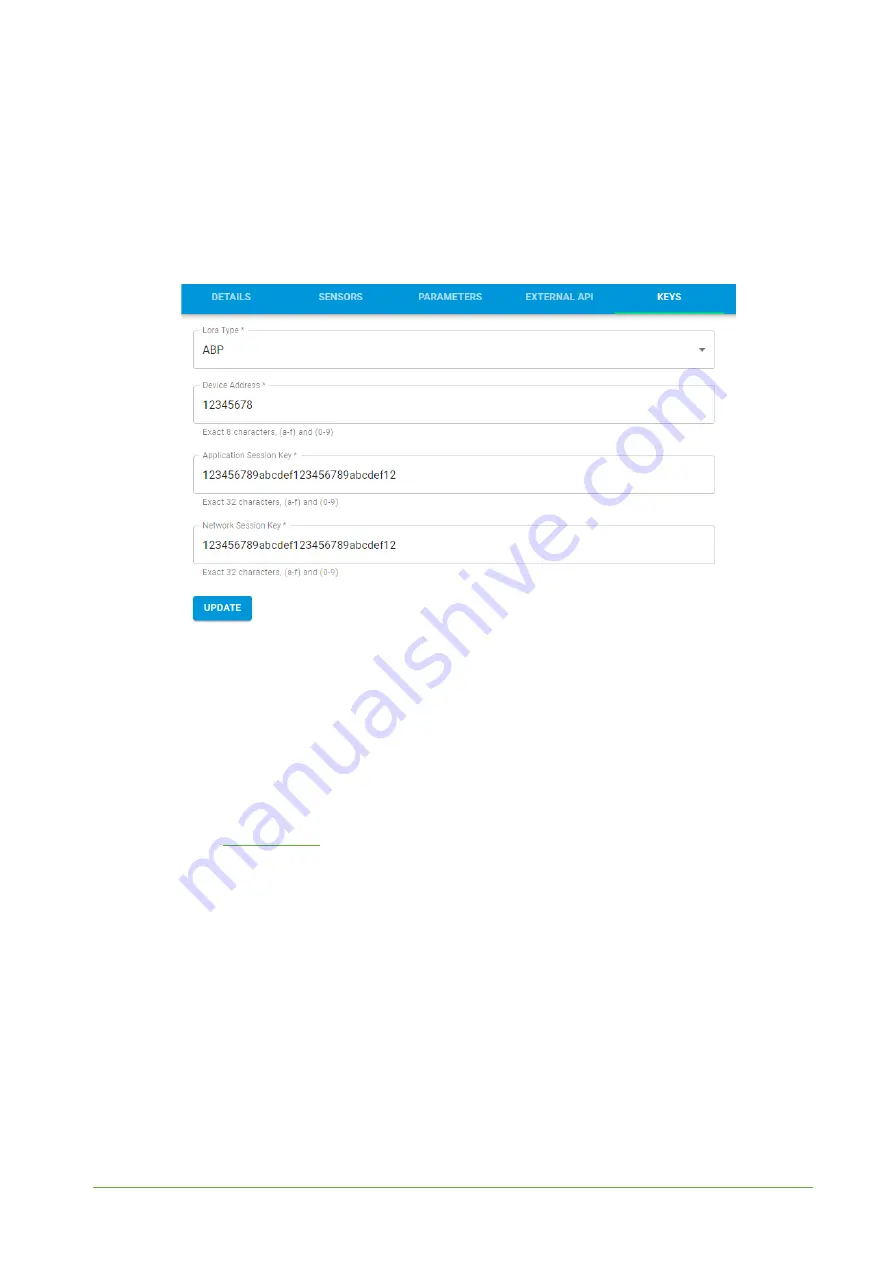
YO Modbus
User guide
v2.1
page 29/33
5.
New nodes must be added in OTAA mode
. Nodes can be switched to ABP mode after
activation in the Yosensi Management Platform by changing the Node configuration. Click on
the link in the ‘Node Name’ column. Go to the ‘KEYS’ tab and switch ‘LoRa Type’ from OTAA
to ABP and fill in the blank spaces, then press update. The identifiers ‘Device Address’
(
devaddr
), ‘Application Session Key’ (
appskey
) and ‘Network Session Key’ (
nwkskey
) are
provided by Support, or can be found in the device’s configuration pane while connected to
the node in the firmware section.
Figure 22
Node LoRa type configuration form.
6. When the server receives data from the device, you’ll notice that the ‘Last Seen’ column
(‘NODES LIST’ tab) status changes from ‘never’ to a few ‘seconds ago’.
7. Open charts by clicking on the ‘OPEN’ button in Dashboard columns or by entering the
node’s ‘DETAILS’ tab (‘Node Name’ column link) and clicking ‘CHARTS’.
Adding node via Bluetooth
1. Log in at
2. You’ll see the default organization view. To switch to another organization, click on the user
avatar in the right top corner and select ‘Switch Organization’.
3. To create an application, click the bottom right ‘+’ button. Fill in the ‘Name’ and ‘Description’
fields and select the ‘Application Profile’, which is the region definition.
4. Proceed to the application by clicking its name on the list, and press the ‘+’ button to add a
node. Click ‘
Add via Ble
’. Select the device to add. Then, the list with devices available to
connect to the application will appear. The name of the node will be generated automatically
from the device model and Node ID (
deveui
), with OTAA key and DEV EUI filled in, press
create.
5. When the server receives data, you’ll notice that the ‘Last Seen’ column (NODES LIST’ tab)
status changes from ‘never’ to a few ‘seconds ago’.
6. Open charts by clicking on the ‘OPEN’ button in Dashboard columns or by entering the
node’s ‘DETAILS’ tab (‘Node Name’ column link) and clicking ‘CHARTS’.



















